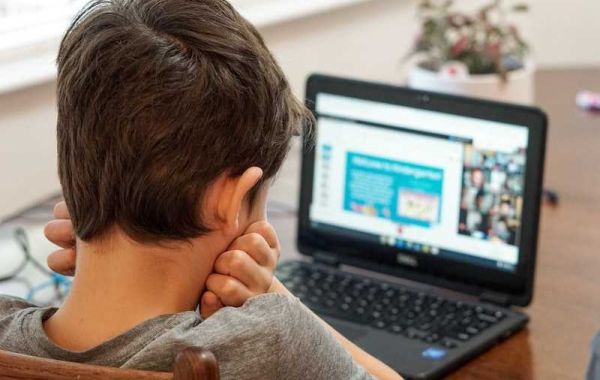Naltrexone is an opioid receptor antagonist commonly used to treat alcohol and opioid addiction. It works by blocking the activity of opioids in the brain, preventing them from binding to their receptors and causing the euphoric effects that are associated with drug use. In this blog post, we will look at how naltrexone interacts with the brain to treat addiction. Please visit EMRGENT Addiction for more info.
How Naltrexone Works in the Brain
Naltrexone is a type of drug known as an opioid receptor antagonist. This means it blocks or interferes with the activity of opioids, such as heroin and prescription painkillers, in the brain by preventing them from binding to their receptors. As a result, these drugs can no longer produce their desired effects, such as feelings of pleasure or euphoria. By blocking these effects, naltrexone helps reduce cravings and can make it easier for people to break their addiction.
The way naltrexone works in the brain is complex but can be broken down into three main steps. First, naltrexone binds to certain opioid receptors in the brain and blocks them from being activated by opioids. This prevents opioid molecules from entering cells and binding to their receptors. Second, this “block” reduces opioid-induced euphoria by preventing opioids from producing pleasurable effects in the brain. Finally, by reducing cravings for opioids, naltrexone makes it easier for people with addictions to stay abstinent from drugs or alcohol.
Naltrexone is thought to be most effective when combined with other treatments such as counseling or therapy sessions that focus on helping individuals develop new coping skills or behaviors that will help them avoid relapse or further substance abuse issues. Studies have shown that combining medication-assisted treatment (MAT) such as naltrexone with behavioral therapy can significantly increase one's chances of successfully recovering from addiction over time compared with just MAT alone.
Dosage of Treatment
Depending on the severity of your condition, the dosage of treatment may vary. Your doctor will typically start you off at a low dose and then adjust it as needed. You should always follow your doctor's instructions when taking any medication or supplement. Dosage is also important because too much can be dangerous, while too little may not provide enough benefit. Talk with your doctor to decide what the right amount is for you.
In general, it is recommended that you take your prescribed dosage once in the morning and once in the evening with meals, unless otherwise specified by your physician. If you experience any uncomfortable side effects from the treatment, talk to your doctor about adjusting the dosage accordingly. It is also important to remember that dosages may need to be adjusted over time depending on your response and the progression of your condition.
It is important to take the correct dosage, as too much or too little could result in an ineffective treatment plan. This can mean that you will not see any improvements or, worse yet, it could cause serious side effects or an overdose. Therefore, it is important that you always follow your doctor's instructions for taking medications and supplements. If you have any questions about how to take a particular medication or supplement, make sure to ask your healthcare provider for information before starting the treatment.
Indications
The prescription of naltrexone takes place after you have quit taking opioids or alcohol for about seven to ten days. Immediate prescription or a combination is not advisable because it can result in severe withdrawal symptoms.
If you have an opioid or alcohol addiction problem but suffer from kidney or liver disease, or acute hepatitis, you should stay clear of naltrexone. Also, if you consume narcotic painkillers or/ and have an allergy towards it, you must stay away from it. Pregnant or breastfeeding women are also encouraged to avoid naltrexone since it can cause problems for the born and unborn babies
Rapid Detoxification
is a method for relieving the body of stored toxins and heavy metals. It can be done in a variety of ways, such as through chelation therapy, IV infusions, saunas, and other detoxification techniques. The goal of rapid detoxification is to help the body rid itself of any toxins or heavy metals that have been accumulating over time and to stimulate healing processes in order to improve overall health.
Rapid Detoxification can also reduce inflammation, boost immunity, enhance energy levels, and support healthy brain function. Many people find that their symptoms associated with chronic illness improve after undergoing rapid detoxification therapy. Rapid Detoxification can be used as part of an integrative approach to wellness or in combination with other treatments depending on a person’s individual health needs.
It is important to consult with a healthcare provider before engaging in any form of rapid detoxification therapy, as it is not appropriate for everyone. As with all medical treatments, there are potential risks involved and people should understand the possible side effects and how to minimize them. In addition, some forms of rapid detoxification may be illegal or restricted by law in certain areas. People should always research their options thoroughly and consult with their healthcare provider before attempting any type of rapid detoxification program.
Rapid Detoxification can be an effective way to improve overall health when appropriately utilized under the supervision of a qualified practitioner. The best results are often achieved when used in combination with other treatments such as nutrition counseling, lifestyle changes, and stress management techniques. Rapid Detoxification can be an excellent way to jumpstart the body's healing process and restore optimal health. However, it is also important to take a holistic approach to wellness in order to maintain long-term health benefits.
Good luck on your journey to better health! :)








